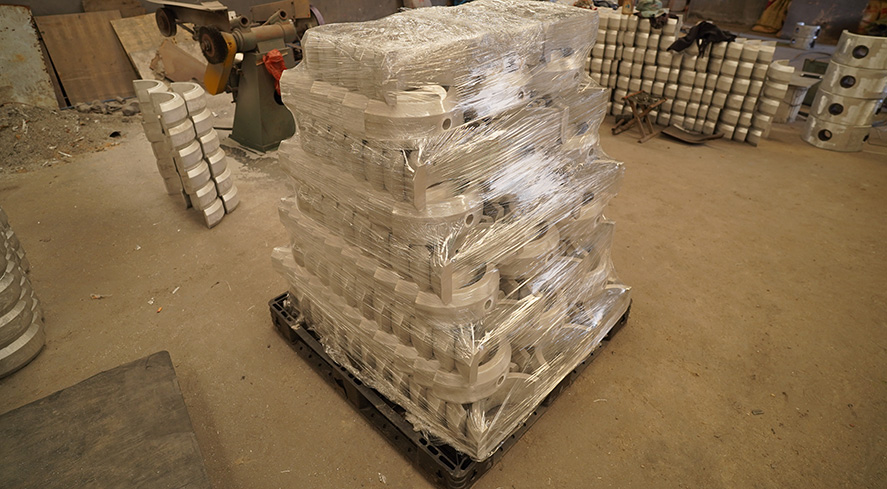
Sand casting involves the pouring of molten metal into a cavity-shaped sand mould where it solidifies. The mould is made of sand particles held together with an inorganic binding agent. After the metal has cooled to room temperature, the sand mould is broken open to remove the casting.
How the Sand Casting Process Works
The sand casting process begins by creating a mold from a mixture of sand and a binding agent. A pattern, which mimics the shape of the final product, is pressed into the sand to create a cavity. Once the mold is prepared, molten metal—typically iron, aluminum, or bronze—is poured into the cavity. As the metal cools, it solidifies and takes on the shape of the mold. Finally, the sand mold is broken away to reveal the finished product, which may require additional finishing processes such as cleaning, trimming, or machining.
Advantages of Sand Casting
One of the key benefits of sand casting is its ability to create complex geometries, including hollow sections and internal passageways, which are difficult to achieve with other manufacturing methods. The process is also highly adaptable, allowing manufacturers to produce both small and large parts with varying degrees of precision.
Additionally, sand casting is known for its cost-effectiveness, particularly for low to medium production runs. The sand used in the process can be recycled and reused, which reduces material waste and helps lower overall production costs.
Challenges in Sand Casting
Despite its many advantages, sand casting does have some limitations. The process can result in surface imperfections due to the texture of the sand mold, which may require additional machining or finishing. Achieving tight tolerances can also be more difficult compared to other manufacturing methods, such as investment casting. Furthermore, the cooling process may cause shrinkage, leading to dimensional inaccuracies if not carefully managed.
However, ongoing improvements in mold materials, process control, and quality assurance techniques are addressing these challenges, ensuring that sand casting remains a highly reliable method of production.
Common Applications of Sand Casting
Sand casting is employed across various industries, from automotive and aerospace to construction and machinery manufacturing. Common products made using this process include engine blocks, metal gears, pump housings, and various structural components.
Advancements in Sand Casting Technology
In recent years, advancements in technology have significantly improved the sand casting process. Modern techniques, such as automated mold-making and 3D printing of sand molds, have streamlined production and enhanced the quality of cast parts. These innovations have led to improved efficiency, reduced lead times, and greater design flexibility.
All in all, the sand casting process remains a critical method in the manufacturing industry, offering a combination of flexibility, precision, and cost-efficiency. As technology continues to evolve, sand casting is likely to remain a cornerstone of production in various sectors, providing manufacturers with an effective way to create complex and durable metal components.
Contact us today to discuss how our expertise in sand casting can help meet your specific project needs. We’re here to provide tailored solutions and high-quality products designed to keep your business moving forward.
